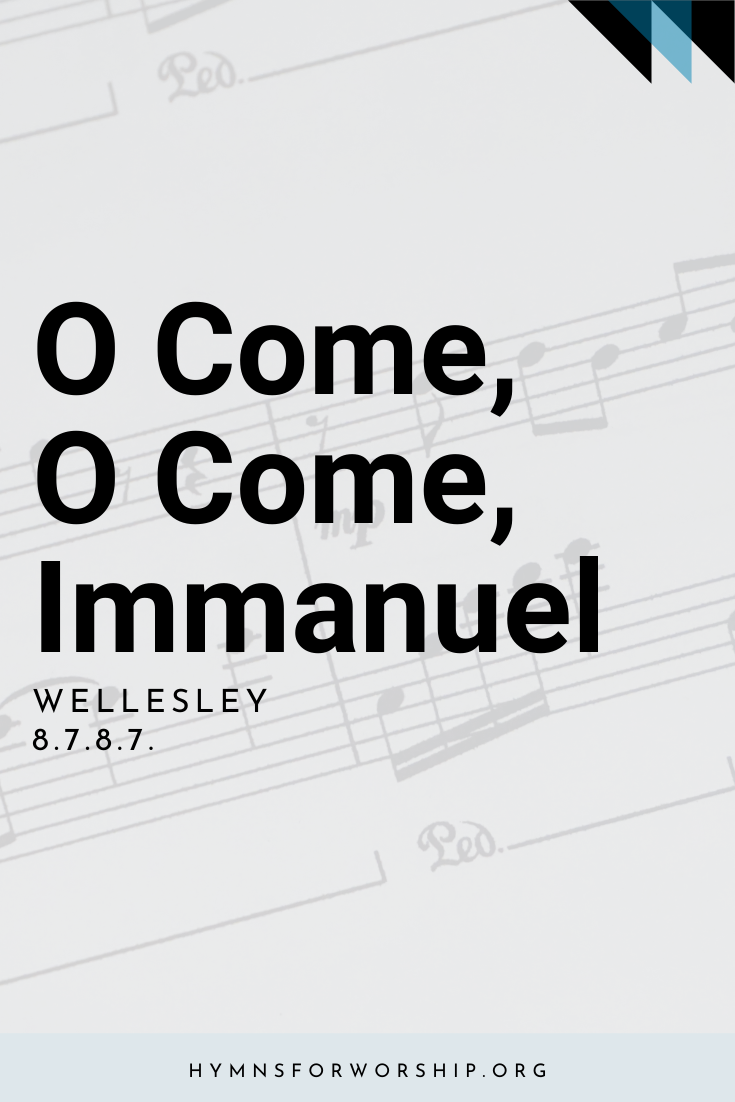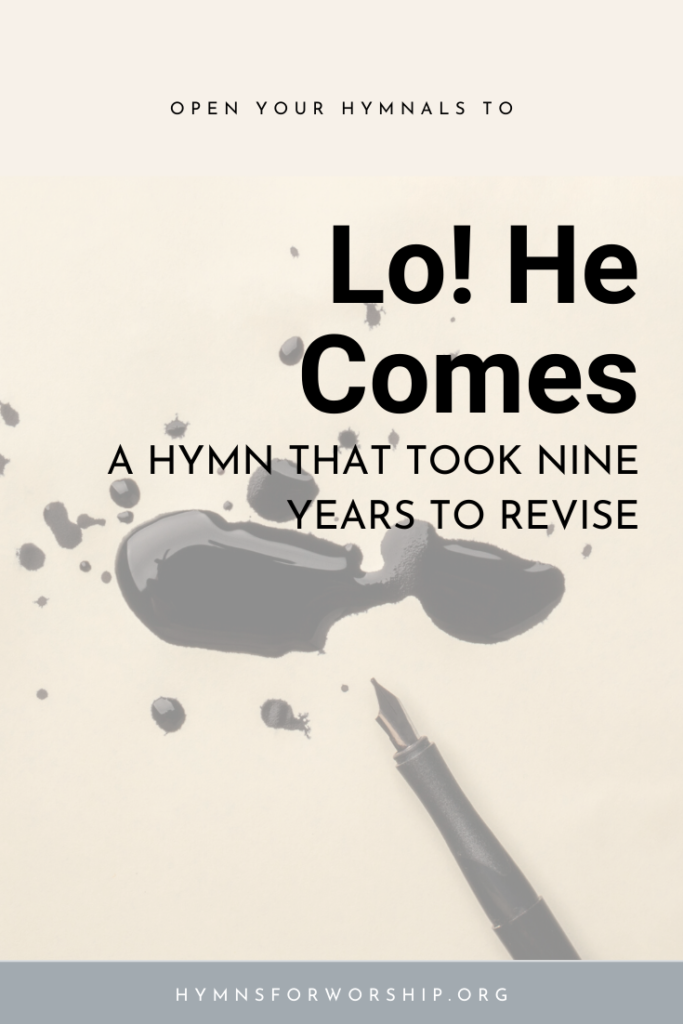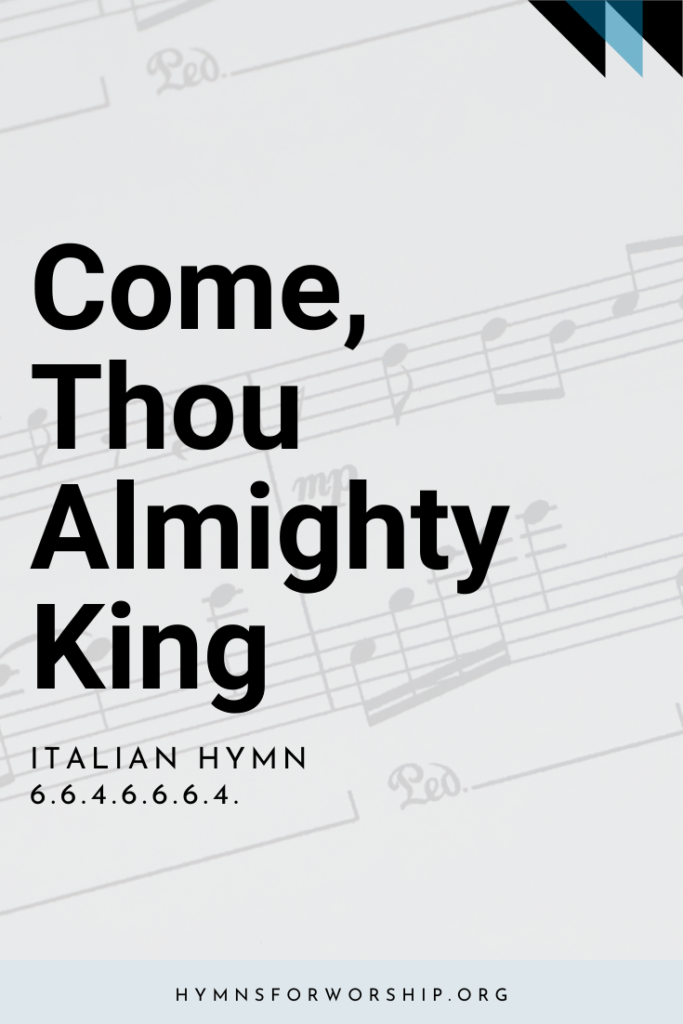JESUS CHRIST >> First advent
SDAH 115
O come, O come, Emmanuel,
And ransom captive Israel,
That mourns in lonely exile here
Until the Son of God appear.
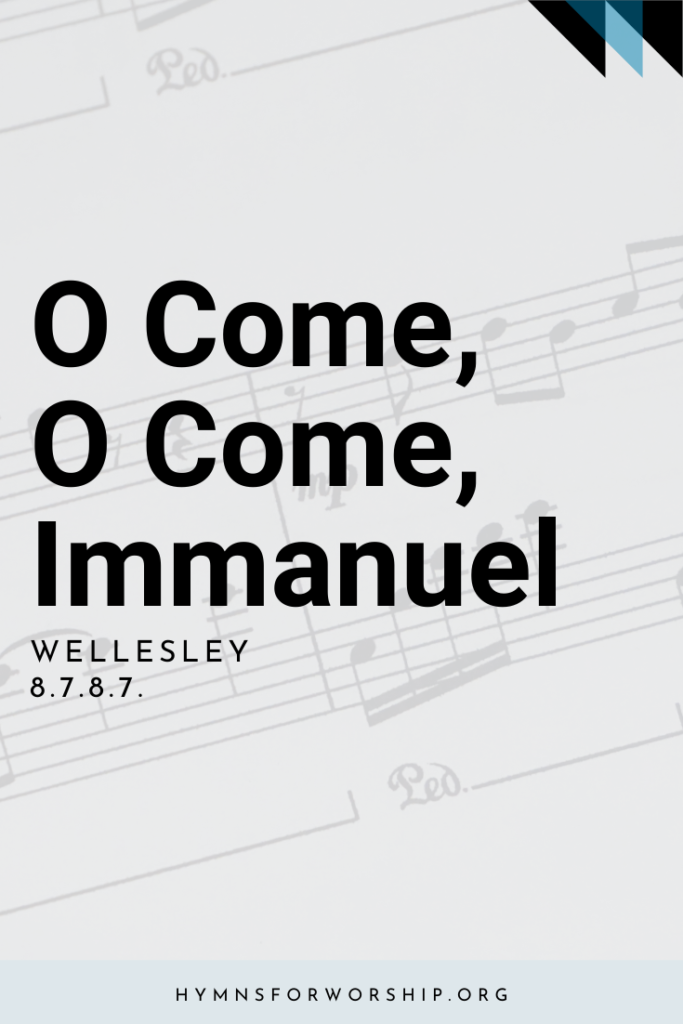
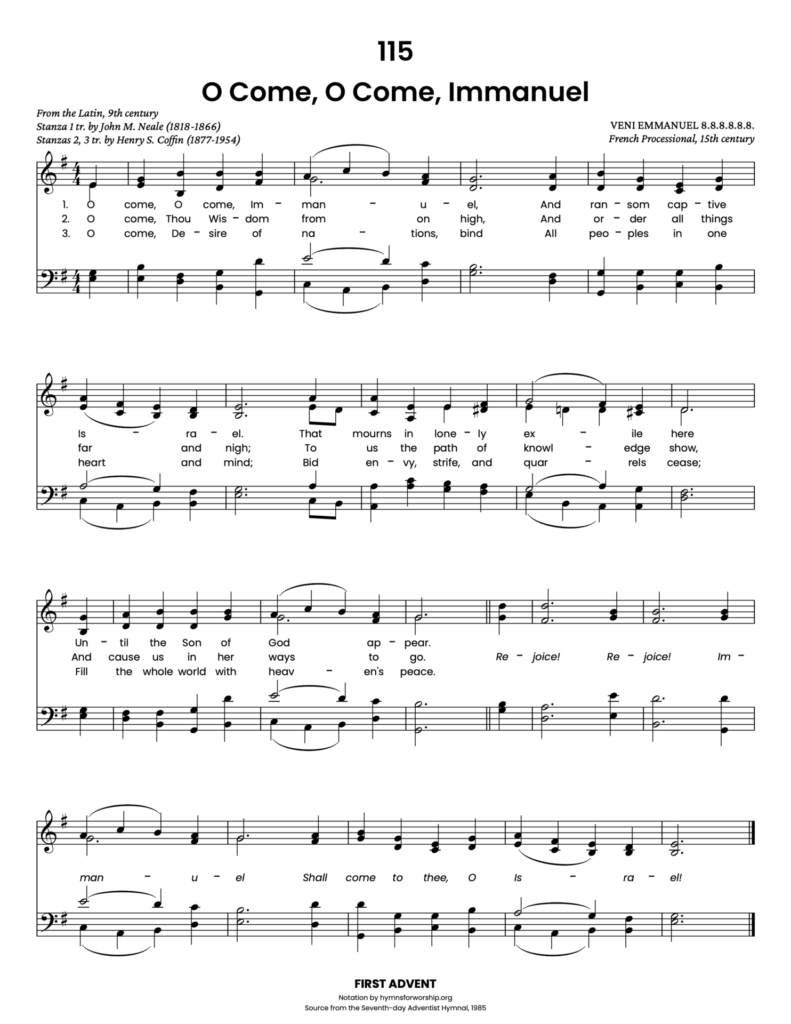
Get the hymn sheet in other keys here
For Worship Leaders
Make each hymn more meaningful with these helpful tools: Short, ready-to-use hymn introductions for church bulletins, multiple ways to introduce a hymn based on your worship theme and in-depth history and insights to enrich your song service.


Text
1
O come, O come, Emmanuel,
And ransom captive Israel,
That mourns in lonely exile here
Until the Son of God appear.
Refrain
Rejoice! Rejoice!
Emmanuel shall come to thee,
O Israel.
2
O come, Thou Wisdom from on high,
And order all things far and night;
To us the path of knowledge show,
And cause us in her ways to go.
3
O come, Desire of nations, bind
In one the hearts of all mankind;
Bid Thou our sad divisions cease,
And be Thyself our King of Peace.

Hymn Info
Biblical Reference
(a) Isa 7:14 (b) 1 Cor 1:24 (c) Hag 2:7
Translator
Stanza 1 tr. by John M. Neale (1818-1866); Stanza 2, 3 tr. by Henry S. Coffin (1877-1954)
Text Source
from the Latin, 9th century
Hymn Tune
VENI EMMANUEL
Metrical Number
8.8.8.8.8.8.
Tune Source
French Processional, 15th century
Theme
FIRST ADVENT

